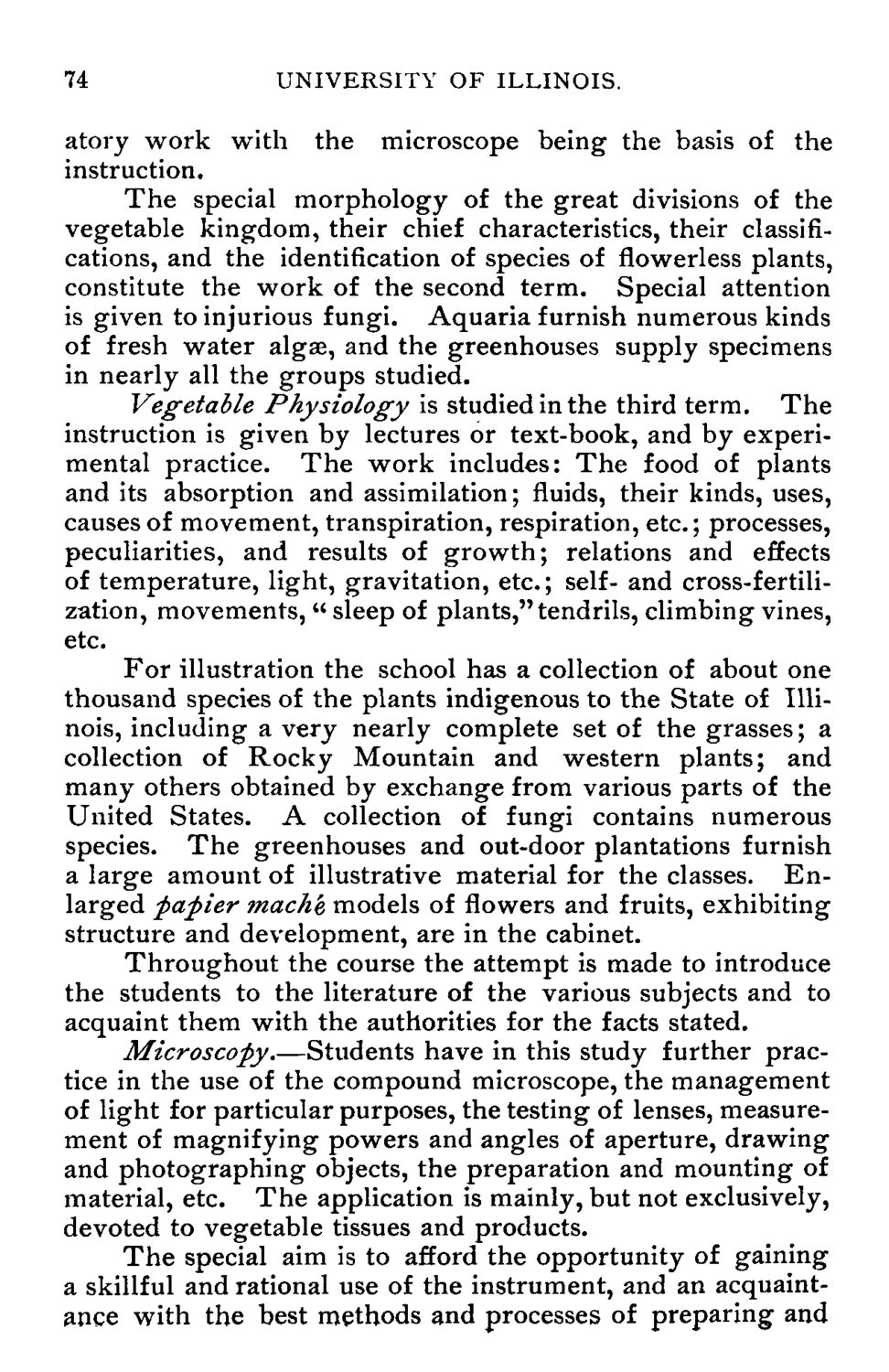| |
| |
Caption: Course Catalog - 1889-1890
This is a reduced-resolution page image for fast online browsing.

EXTRACTED TEXT FROM PAGE:
74 UNIVERSITY OF ILLINOIS. atory work with the microscope being the basis of the instruction. The special morphology of the great divisions of the vegetable kingdom, their chief characteristics, their classifications, and the identification of species of flowerless plants, constitute the work of the second term. Special attention is given to injurious fungi. Aquaria furnish numerous kinds of fresh water algae, and the greenhouses supply specimens in nearly all the groups studied. Vegetable Physiology is studied in the third term. The instruction is given by lectures or text-book, and by experimental practice. The work includes: The food of plants and its absorption and assimilation; fluids, their kinds, uses, causes of movement, transpiration, respiration, etc.; processes, peculiarities, and results of growth; relations and effects of temperature, light, gravitation, etc.; self- and cross-fertilization, movements, " sleep of plants," tendrils, climbing vines, etc. For illustration the school has a collection of about one thousand species of the plants indigenous to the State of Illinois, including a very nearly complete set of the grasses; a collection of Rocky Mountain and western plants; and many others obtained by exchange from various parts of the United States. A collection of fungi contains numerous species. The greenhouses and out-door plantations furnish a large amount of illustrative material for the classes. Enlarged papier mach'e, models of flowers and fruits, exhibiting structure and development, are in the cabinet. Throughout the course the attempt is made to introduce the students to the literature of the various subjects and to acquaint them with the authorities for the facts stated. Microscopy Students have in this study further practice in the use of the compound microscope, the management of light for particular purposes, the testing of lenses, measurement of magnifying powers and angles of aperture, drawing and photographing objects, the preparation and mounting of material, etc. The application is mainly, but not exclusively, devoted to vegetable tissues and products. The special aim is to afford the opportunity of gaining a skillful and rational use of the instrument, and an acquaintance with the best methods and processes of preparing and
| |